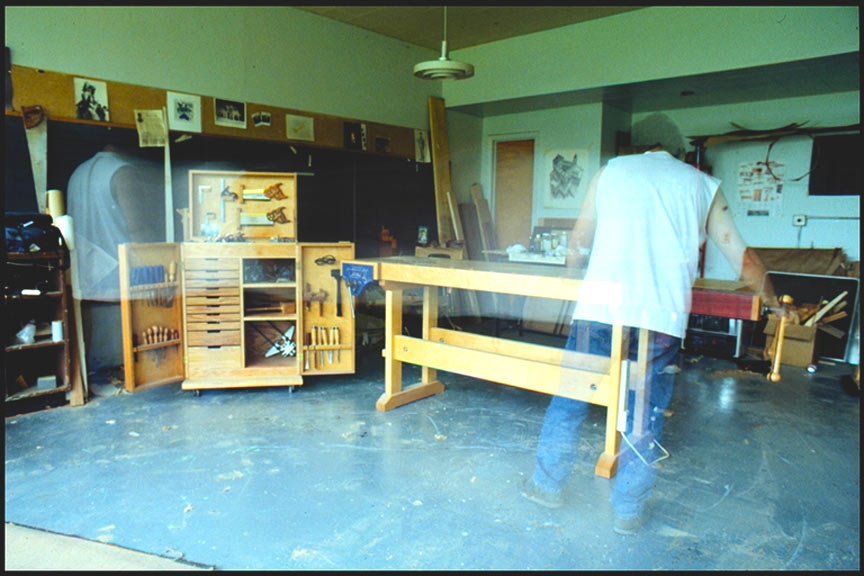
The Genoa School of Furniture Design: My Story
The Genoa School of Furniture Design was founded in 1988 by Clifford Buisch and Doug Davenport. Both were successful antique dealers who wanted to give back by helping create the next generation of master craftsmen.
They acquired the old, defunct Genoa public school building for what I understand wasn’t a whole lot. The building had been closed for many years. Originally set aside for a nursing home that never materialized. Over time, it became a magnet for vandalism, a burden on the town. But despite sitting empty for years, the building was solid. It had all the character of a well-built public school of its era—marble entryway, beautiful woodwork, a decent-sized gymnasium, and two levels of classrooms.
After the baby boom, Genoa’s population dropped, and it didn’t make sense to keep the school open. Students were sent to nearby towns. Genoa, like much of Cayuga County, was mostly farm country. I remember people telling me they used to play donkey soccer in the gym.
So in 1988, Clifford and Doug stepped in. They cleaned up the damage—mostly just broken windows—and got to work. Then they reached out to the staff of the recently closed Wendell Castle School of Furniture in Rochester, NY. That school had an amazing reputation and had produced many talented graduates. Genoa’s new school was modeled after it.
Many from the Wendell Castle School—staff and recent grads alike—were invited to Genoa and accepted the opportunity. This caused a bit of tension with Wendell Castle himself, who had expected his team to transition to RIT (Rochester Institute of Technology). But the appeal of creating a new school in Genoa won out.
With the building restored and the staff assembled, the real work began: building a curriculum, outfitting the gymnasium with brand-new woodworking equipment, and converting classrooms into bench rooms, art rooms, and drafting spaces. A metal shop was also established in the lower level, complete with its own instructor. It was a monumental effort—everything from workbenches to drawing boards had to be built or acquired—but they pulled it off.
In that first year, they opened with five students. Because the building had showers and plenty of space, all of them lived on the second floor. That was year one.
At the time, I was living in Ithaca, NY, about 25 miles south of Genoa. I was working as a cook at the Cabbagetown Café in Cornell’s Collegetown. I heard about a furniture school up north that hosted open houses and visiting artist presentations, so I decided to check it out.
I still remember walking the halls of that old school building, taking in the smell of freshly cut wood. The gym was a sight to see, transformed into a fully equipped woodshop. The five students who lived there were clearly immersed in their work. It felt like a world unto itself. I was captivated—but also intimidated by the craftsmanship I saw. I didn’t think I could ever do work like that.
Funny enough, one of my best friends, Rich Taub, was a graduate of the Wendell Castle School, but woodworking never really clicked for me until I visited Genoa. After that visit, I signed up for some continuing ed woodworking classes through a New York state program called, BOCES. I loved it, and the next step was clear: enroll at Genoa.
It was a two-year, full-time program. I joined a class of six students, with a staff of about the same number. Classes ran five days a week, but the building was open 24 hours a day—including weekends. And it needed to be—the workload demanded extra hours. I found I was most productive in the evenings.
We were required to complete every project assigned by every teacher—metalwork, art, drafting, and of course, designing and building furniture using traditional joinery and techniques. Being in the middle of farm country helped keep distractions at bay. That year, students were no longer allowed to live in the building, so we found nearby apartments. Mine was a short walk away, which was great for my golden retriever, who eventually became shop dog #1.
Year two brought a new group of students—maybe around a dozen—and the program continued to evolve. There was plenty of room in the building for everyone.
I graduated that year and even gave a speech at the ceremony (which I’ve included below).
In year three, I returned as an artist-in-residence and assistant teacher. In exchange for my duties, I had a studio and full use of the facilities. Another class came in that year, but it would be the last.
The economy took a downturn. Clifford and Doug had been funding the school through their antique business, but tuition alone wasn’t enough to sustain operations. When the antique market dried up, bills piled up. Staff stopped getting paid. They did everything they could to keep it going, but when the IRS came calling, it was over. The school was padlocked and later auctioned off.
We’d held many public events over the years, like the one I first attended. But nothing brought people out like that final auction—hundreds showed up. And just like that, it was done.
It was a great run. For me, it was the perfect moment to be there. And now, 34 years later, I’m still a furniture maker—still learning, still loving what I do.
Shout out to the teachers I remember and apologize to those I missed. Tim Wells. Head teacher and master craftsman originally from England who studied under John Makepeace and worked with Wendell Castle. Mark Gravino, design and drafting. He offered up practical approaches. “Cut to the line, save time”. Pat the art teacher who loved us all and knew we were all meant for greatness. Ed the wonderful Art History teacher who loved teaching us about art history from Windsor Chairs to the curtains on the walls and the china set on the table. Michael Clapper, bench room teacher, great resource and friendly guy. Toby Dean, another talented bench room instructor. Bill Shafer was down in the metal shop. Jim Hill came in for awhile for more technique and design and toward the end Helmut Lueckenhausen came in from Australia to share yet a different approach to design and technique..
You can interact with others on the Genoa School of Furniture Design Facebook page.

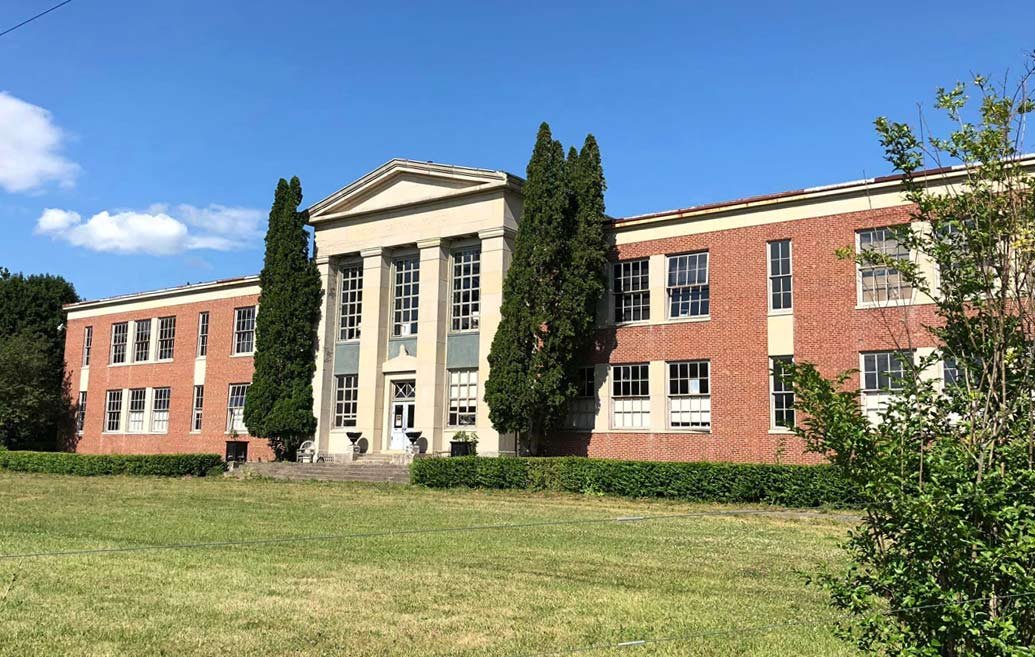
School Building

Poster

Diploma

Tim Wells

Michael Clapper

Danielle and Michael glue-up

Our Bible

Marnie

Student Critique Day
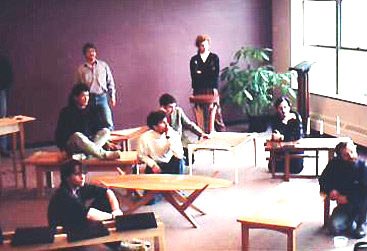
Student Critique Day
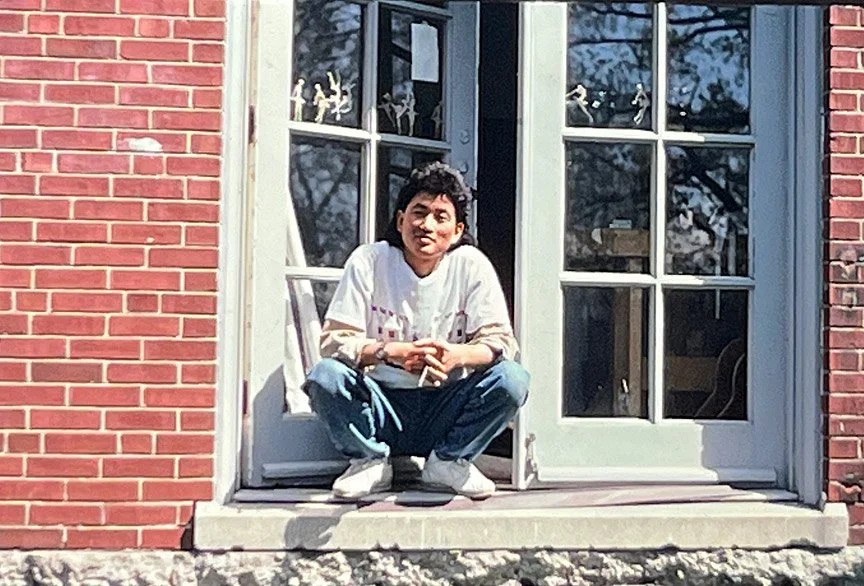
June

Dwight

Danielle
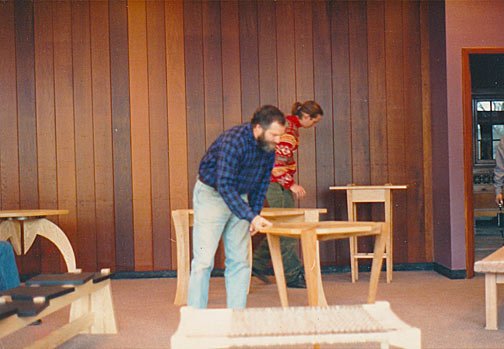
Steve

June Park (ing it)

Captain Dovetails
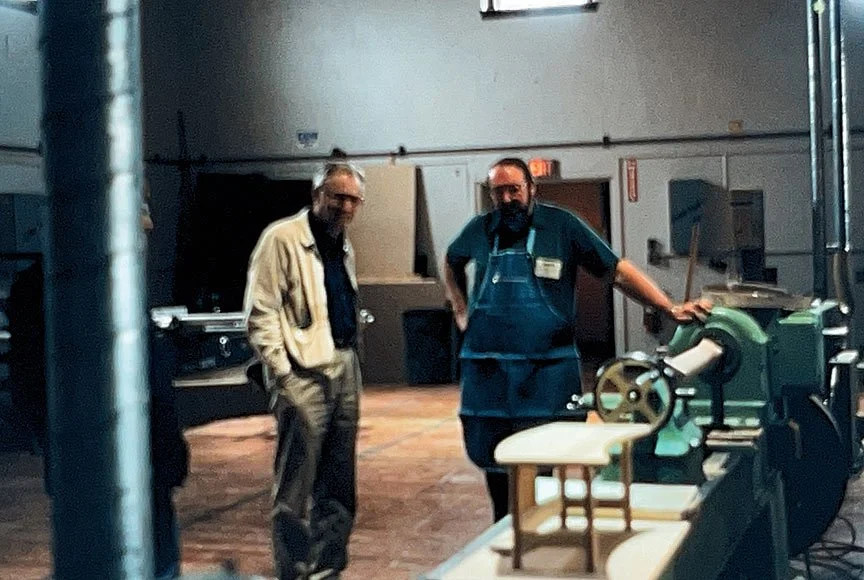
Pocket Jingles Ray

Wendell grad Rich Taub

Michael who worked with me at Cabbagetown and told me about the school
Residence Studio and Graduation
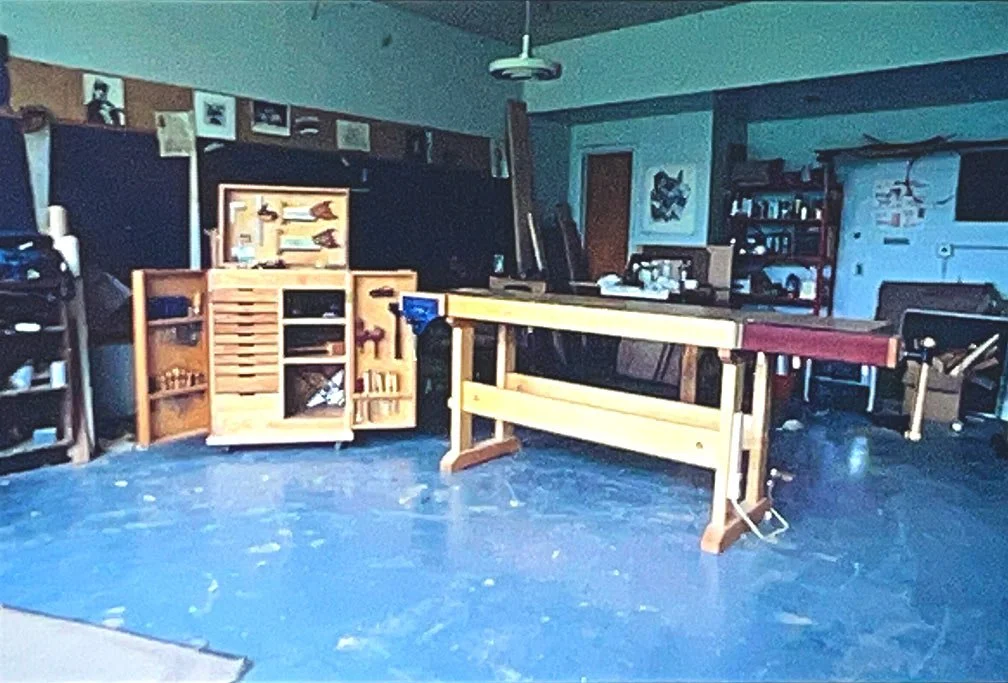
Artist in residence studio

Genoa Tool Cabinet

Extremely rare photo without beard.

Magic Happens
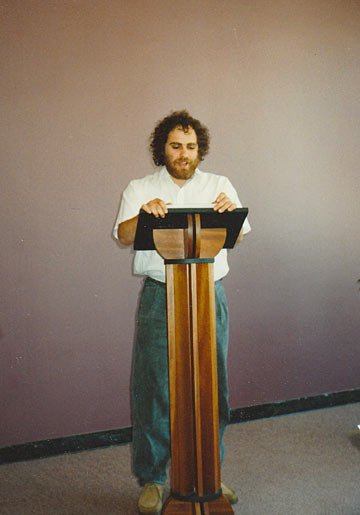
Graduation Day
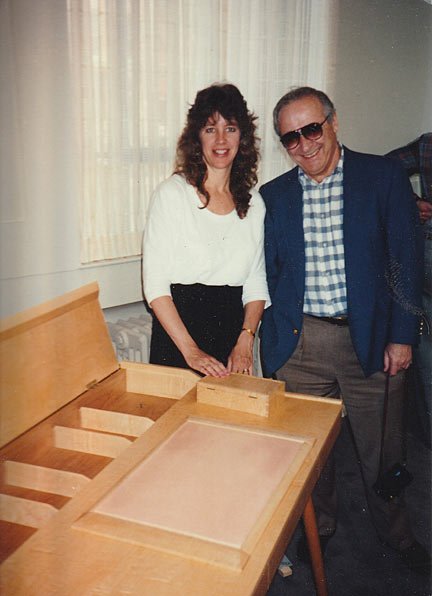
Proud Dad and Sister Inlaw
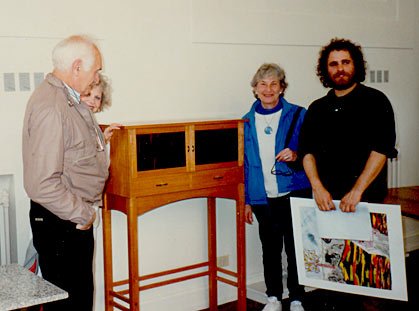
Proud Aunt and Uncle

Shop Dog Jasmine during my 3rd year
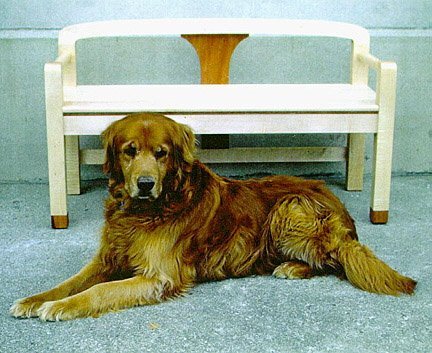
Jasmine in front of the building. During my third year Jasmine came into my studio along with my studio mate Laura who owned a Great Dane with her own couch. There was some comment floating around that Clifford did not want any dogs in the building. He was visiting my studio and my friendly Golden just had to greet him. Nothing was ever said. Maybe he didn't mind the artists in residence as long as the dog stayed in the studio. There was a third dog about too.

Mascot
Timber Frame Wardrobe
Final Project

Timber Frame Wardobe

Dovetail Drawers
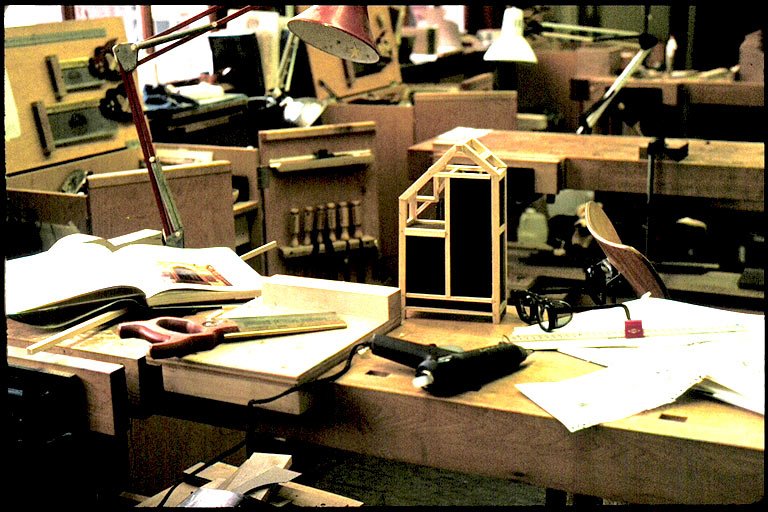
Project Model
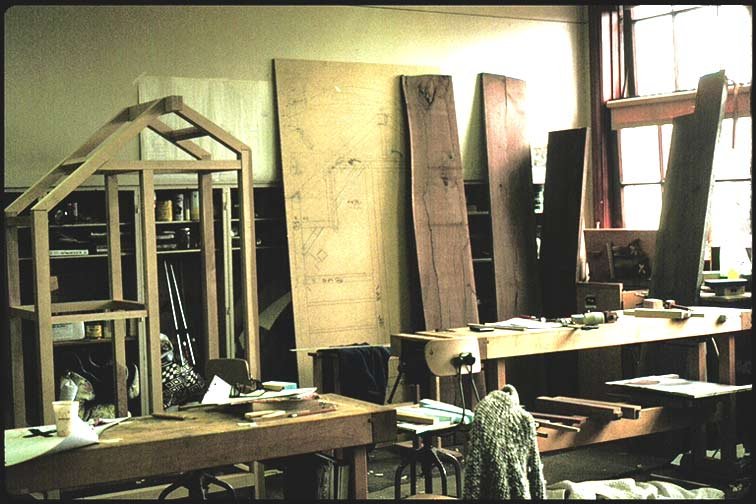
Air Dried Walnut Boards

No Comment


